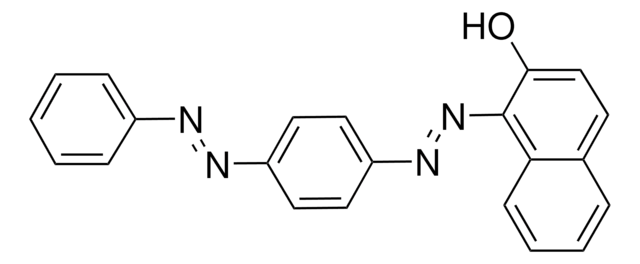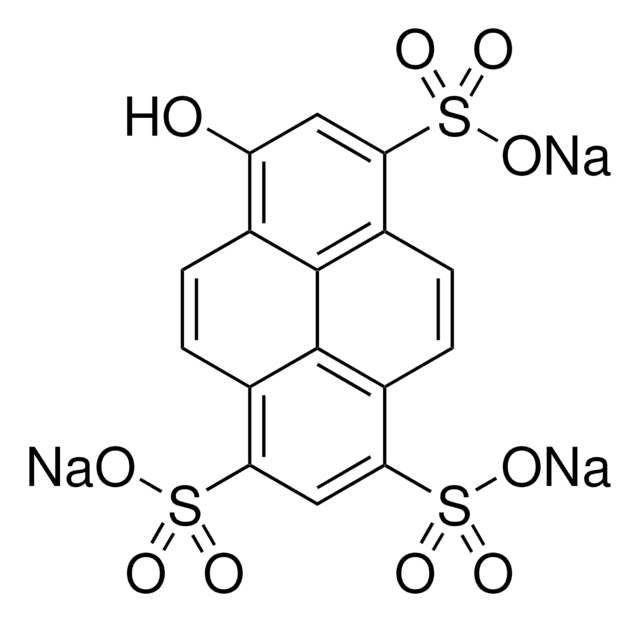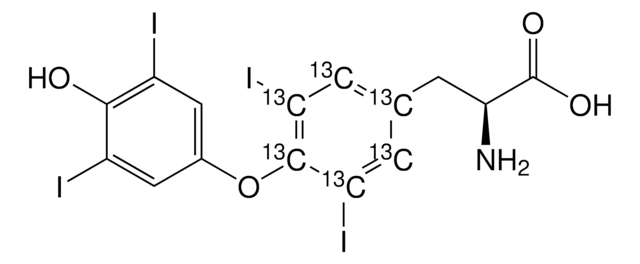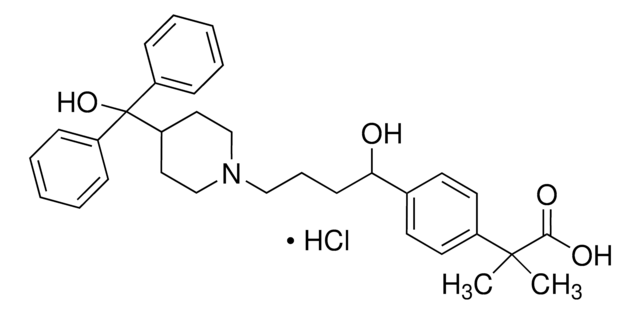T2501
L-Thyroxine sodium salt pentahydrate
≥98% (HPLC), powder
Synonyme(s) :
3-[4-(4-Hydroxy-3,5-diiodophenoxy)-3,5-diiodophenyl]-L-alanine sodium salt, Sodium levothyroxine, T4
About This Item
Produits recommandés
Source biologique
synthetic (organic)
Niveau de qualité
Stérilité
non-sterile
Pureté
≥98% (HPLC)
Forme
powder
Pf
207-210 (dec.) (lit.)
Solubilité
4 M NH4OH in methanol: 50 mg/mL, clear to hazy, colorless to yellow
Conditions d'expédition
ambient
Température de stockage
−20°C
Chaîne SMILES
O.O.O.O.O.[Na+].N[C@@H](Cc1cc(I)c(Oc2cc(I)c(O)c(I)c2)c(I)c1)C([O-])=O
InChI
1S/C15H11I4NO4.Na.5H2O/c16-8-4-7(5-9(17)13(8)21)24-14-10(18)1-6(2-11(14)19)3-12(20)15(22)23;;;;;;/h1-2,4-5,12,21H,3,20H2,(H,22,23);;5*1H2/q;+1;;;;;/p-1/t12-;;;;;;/m0....../s1
Clé InChI
JMHCCAYJTTWMCX-QWPJCUCISA-M
Informations sur le gène
mouse ... Cnr2(12802)
rat ... Cnr1(25248)
Vous recherchez des produits similaires ? Visite Guide de comparaison des produits
Actions biochimiques/physiologiques
Notes préparatoires
Produit(s) apparenté(s)
Mention d'avertissement
Danger
Mentions de danger
Conseils de prudence
Classification des risques
STOT RE 1
Organes cibles
Thyroid,Cardio-vascular system,Kidney
Code de la classe de stockage
6.1C - Combustible acute toxic Cat.3 / toxic compounds or compounds which causing chronic effects
Classe de danger pour l'eau (WGK)
WGK 3
Point d'éclair (°F)
Not applicable
Point d'éclair (°C)
Not applicable
Équipement de protection individuelle
Eyeshields, Gloves, type N95 (US)
Certificats d'analyse (COA)
Recherchez un Certificats d'analyse (COA) en saisissant le numéro de lot du produit. Les numéros de lot figurent sur l'étiquette du produit après les mots "Lot" ou "Batch".
Déjà en possession de ce produit ?
Retrouvez la documentation relative aux produits que vous avez récemment achetés dans la Bibliothèque de documents.
Les clients ont également consulté
Notre équipe de scientifiques dispose d'une expérience dans tous les secteurs de la recherche, notamment en sciences de la vie, science des matériaux, synthèse chimique, chromatographie, analyse et dans de nombreux autres domaines..
Contacter notre Service technique









